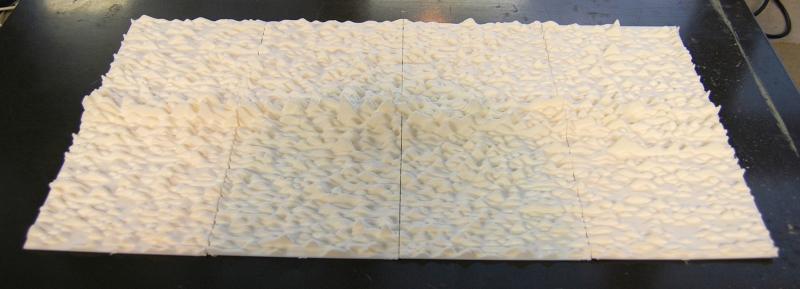3D Printed Data Sculpture
Summary
ACCAD developed software to generate a 3D representation of humanities data that could be 3d printed. The printed model is a visualization of the occurrence frequencies of one hundred different key terms from 85 years of a 20th century history journal.
Project Team
Faculty and Staff
Prof. David Staley, History
Dr. Matthew Lewis, ACCAD

Project Description
Software was developed to generate a 3D representation of humanities data that could be 3d printed. The printed model is a visualization of the occurrence frequencies of one hundred different key terms from 85 years of a 20th century history journal, The Florida Historical Quarterly. Key terms were identified using the Data For Research application developed by JSTOR. The key terms were determined using term frequency–inverse document frequency (TF-IDF). The technique of macro-reading and 3D pattern visualization suggests another way to think about how we might conduct historiographic inquiry.
The results were presented at the "Return to the Material" conference at the University of Kansas Institute for Digital Research in the Humanities, on 9/14/2013 as "The Florida Historical Quarterly: A macro-scale reading of the journal as a 3-D sculpture". Professor Staley aimed to represent "digital humanities praxis as art, and the digital humanist as radical visualizer" and to "view historical sculpture both as a physical object that represents history and also as a rhetorical strategy, as a way to perceive historical information in a context outside of the traditional research paper, monograph or other text-based performance that are standard in our craft."
The project was competed in 2013.
